Out for the day: Las Illas, La Vajol and the Chemin de l’Exil
IN THE FOOTSTEPS OF THE RETIRADA
The Retirada
In early 1939, the Second Spanish Republic collapsed. As General Francisco Franco, aided by Nazi Germany and Fascist Italy, declared a fascist government, nearly half a million desperate Spanish refugees, civilians and soldiers, arrived at the French Spanish border seeking asylum.
This was the biggest single influx of refugees ever known in France. This was the Retirada.
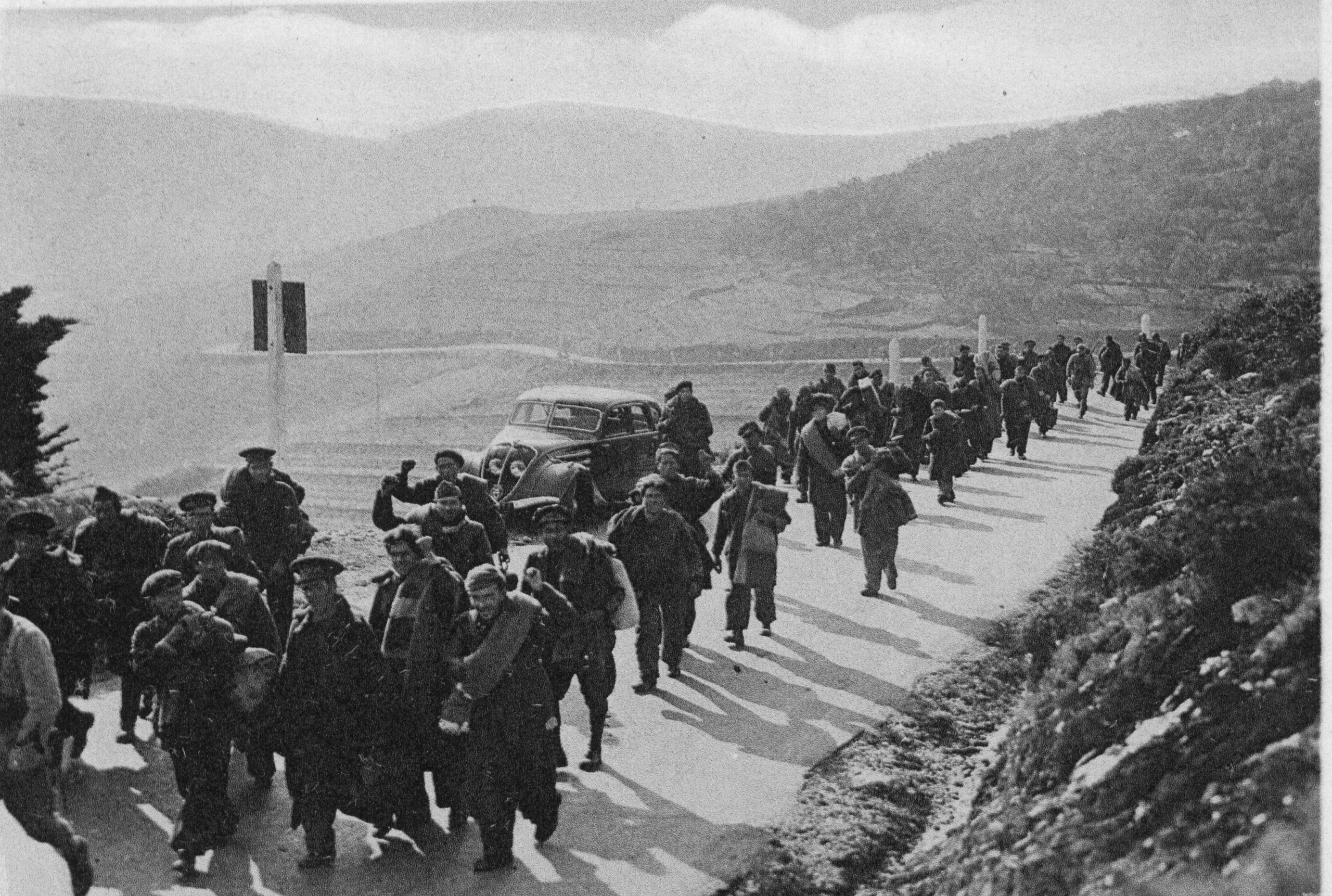
8th February 1939
The young, the elderly, the infirm, the broken. On foot, over snow covered mountains, along coast and cliff, they headed for sanctuary just as persecuted Jews and fallen airmen toiled in the other direction to escape the evil of Hitler and the Nazi occupation of France.
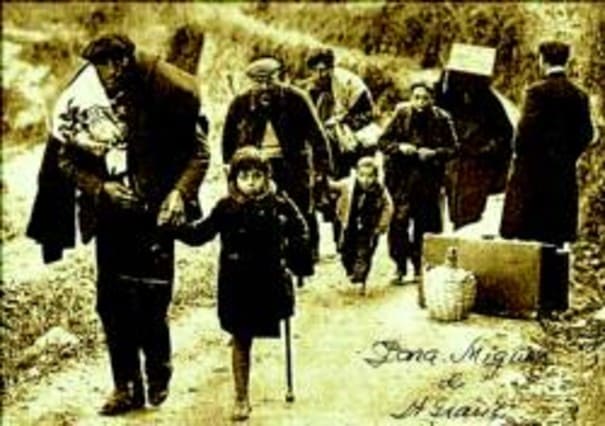
Despite initial French efforts to keep them out, hundreds of thousands crossed the French border via the frontier towns of Las Illas, Cerbère, Le Perthus, Coustouges, Puigcerda, Prats-de-Mollo. They crossed in the depths of winter, one of the coldest on record, suffering incredible hardship, hunger and deprivation on the way.
With a population of around 250,000 inhabitants, the Pyrenees-Orientales was unprepared. Women and children were initially sent to accommodation centres, men ended up behind barbed wire on the beaches at Argelès-sur-Mer, St Cyprien and Le Barcarès.
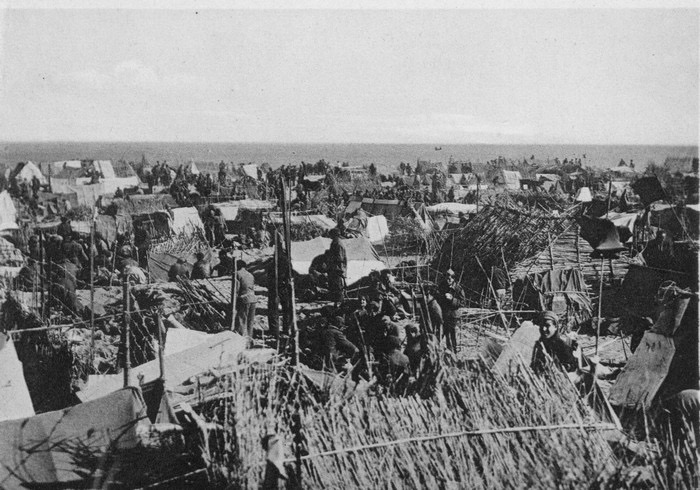
With no protection from freezing temperatures and biting winds, supervised by ‘Gardes Mobiles’ (a special branch of the gendarmerie) and brutal Senegalese troops, they faced unspeakable squalour, food and water shortage, dysentery, rat-infested conditions…..Many died of exposure and were buried where they lay.
Today, more than a third of the Languedoc-Roussillon’s population are descendants of these Spanish refugees.
More than eighty years later, our day out follows in the footsteps of many of those same refugees. We are free – to walk these same beaches, wander these same mountain tracks – but not, I hope, without taking a quiet moment to reflect on man’s inhumanity to man and our own good fortune. Lest we forget.
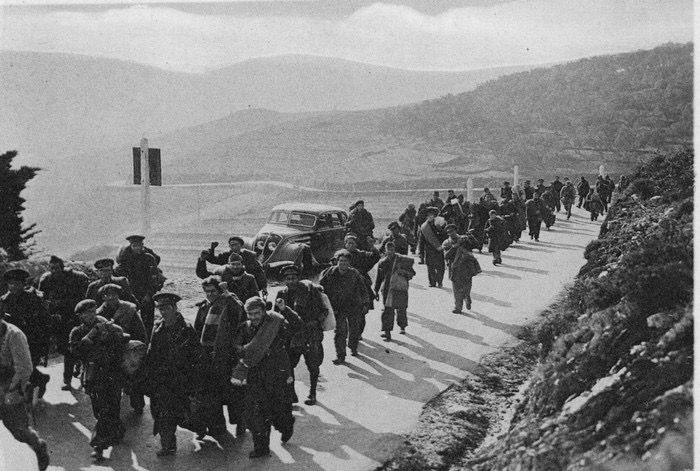
Head first for Maureillas, pretty Catalan village off the D9 Le Boulou – Le Perthus road. Wander round the cobbled centre or pop into the bar on the ‘place’ or the quirky Auberge du Chene just outside the village for a drink or lunch.
From Maureillas, follow signs for Las Illas, the second most southerly village in France after Lamanère, taking the D13 as it winds its way upwards, amidst stunning scenery.Be particularly nice to your driver – he or she will be too busy concentrating on the narrow winding road to enjoy the fabulous views! And if you’re in the back…..well, hang on to your lunch. It’s not far now!
Arriving at the entrance to Las Illas, you can take a break – public loos and even a public shower are available at the village entrance. Have a wander around the sleepy hamlet, or lunch at the aptly named restaurant, Hostal dels Trabucayres, historical shelter for Spanish Republicans fleeing Franco’s Spain, and escapees from Nazi occupied France heading in the opposite direction. Stay for lunch, dinner, the night, a walking weekend….. (often closed)
Out for the day – the drive
Our day begins in Las Illas, a great starting point for some fantastic and panoramic mountain walks, in the tracks of the Trabucayres.

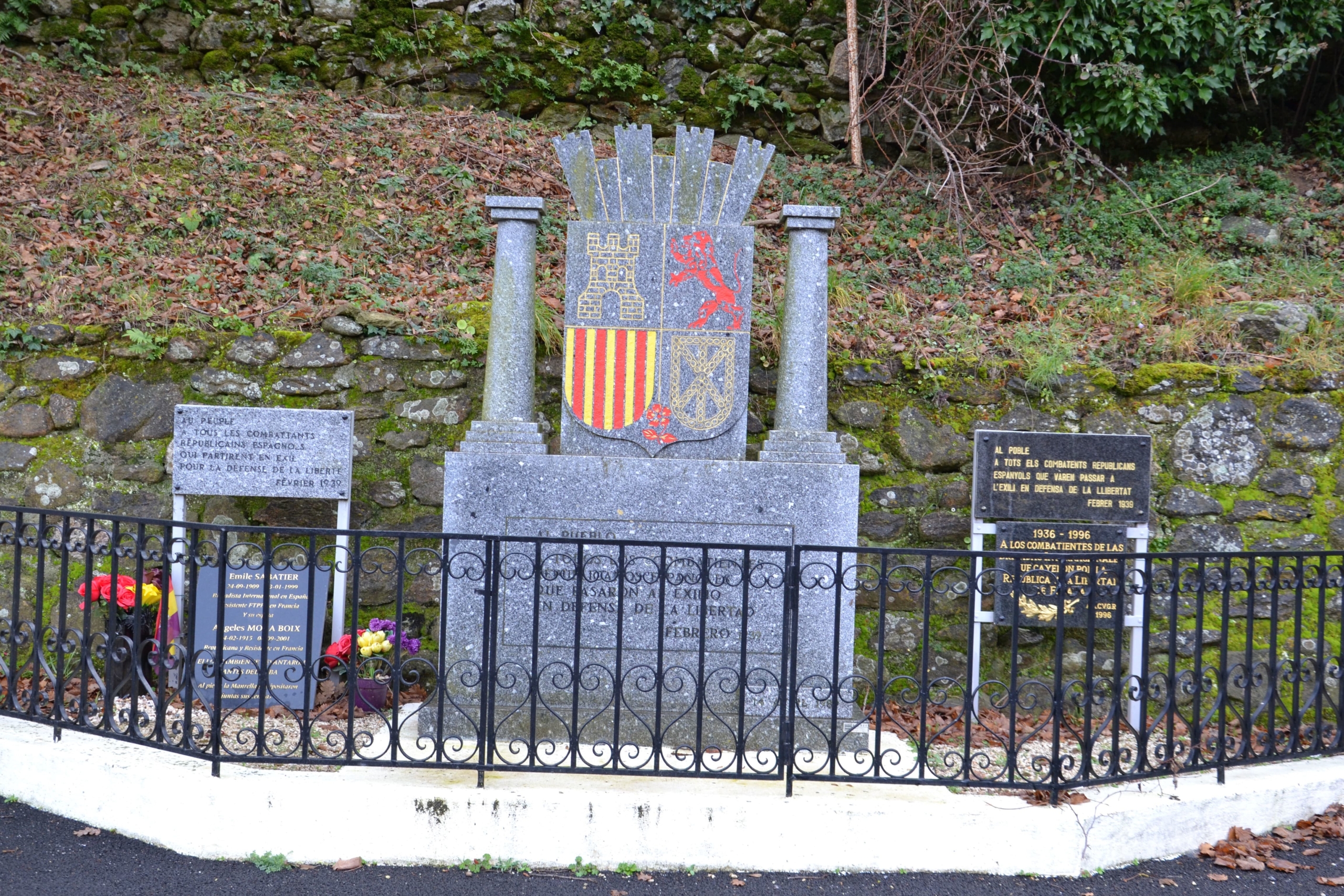
From Las Illas, turn left at the road next to the memorial signed La Vajol. Follow the sign around a hair pin bend to the right (three point turn skills could be required here), then another sharp left hander and continue up the track to the Col de Manrell, a wide open space with an interesting if rather incongruous pyramid monument, Temple de la Paix, dedicated to Luis Companys, president of Catalonia from 1934.
When Franco came to power, Companys fled to occupied France where he was arrested by the Gestapo and sent back to Spain. On Franco’s orders, he was tortured, beaten and executed for treason.
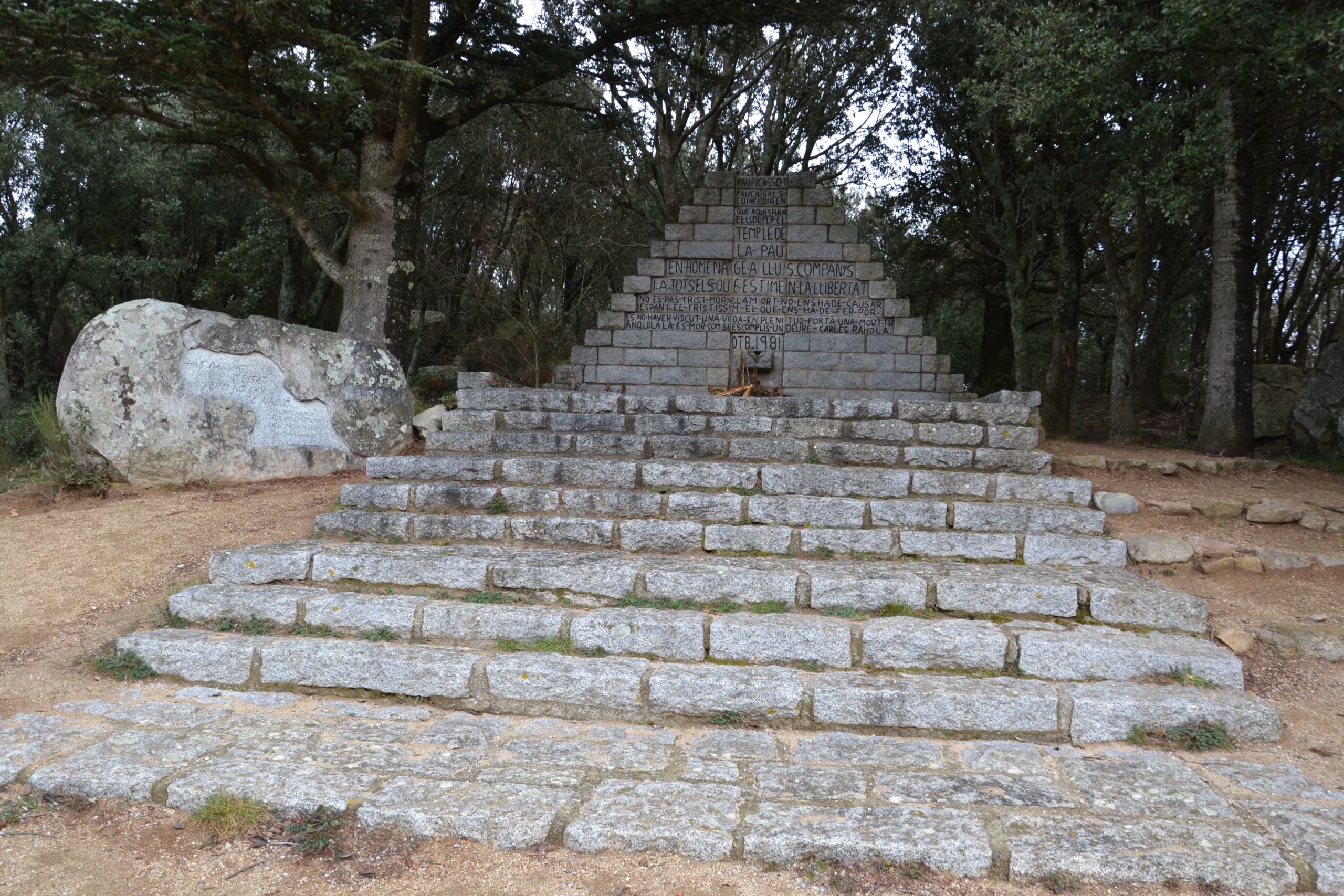
The road widens and improves as you cross into Spain. Wooden viewing platforms allow you to gaze over more breathtaking mountain scenery towards La Jonquera, although it’s not too easy to find an off-road parking place if you just want a quick photo.
Carry on to the large car park of the hotel Manrella on the right and park, (maybe a drink, if not lunch, to justify using their car park.) and retrace your steps 100 yards to follow signs on the left to the Coll de Lli, the original ‘Chemin de l’Exil’. After a gentle 30 minute climb, turn right after the stone Mas and step through a gate and back into France!
Here, you find another monument, this time a rather unexciting stone plaque on land grazed by wide eyed, peaceful cows. These gentle ladies watch over this indelible route, trudged by thousands of exhausted and frozen refugees in the winter of 39, as well as three fleeing presidents; Lluis Companys, Manuel Azaña of Spain, and José Aguirre of the Basques.
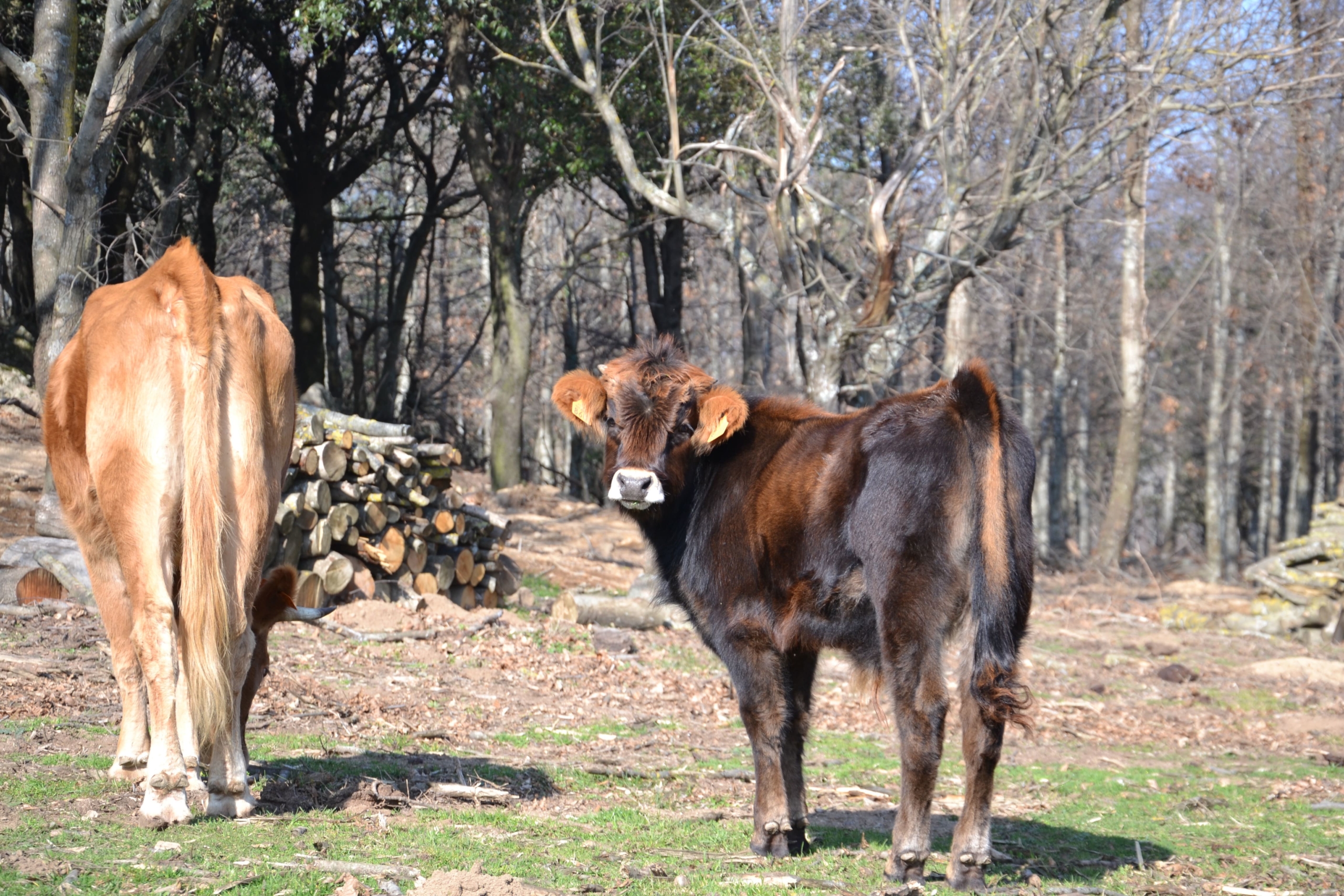
Returning to the stone Mas, you can turn right and continue up the trail for a further 30 minutes until you arrive at a rocky peak on your left, perfect for a panoramic winter picnic, or head back to the car for the short drive to La Vajol.
Just before the pretty village, park in the car park on your left and take the track above, leading quickly to an amazing bronze sculpture raised up on rocks, in a strangely scruffy clearing.
The Gracias family crossed the border with thousands of other refugees, fleeing Franco’s forces. Dutch photographer Roger Violet, took a photo of father Mariano Gracia, supporting his 6 year old, one legged daughter Alicia along the gruelling route over into France (see photo above). The pair were later immortalised in bronze.
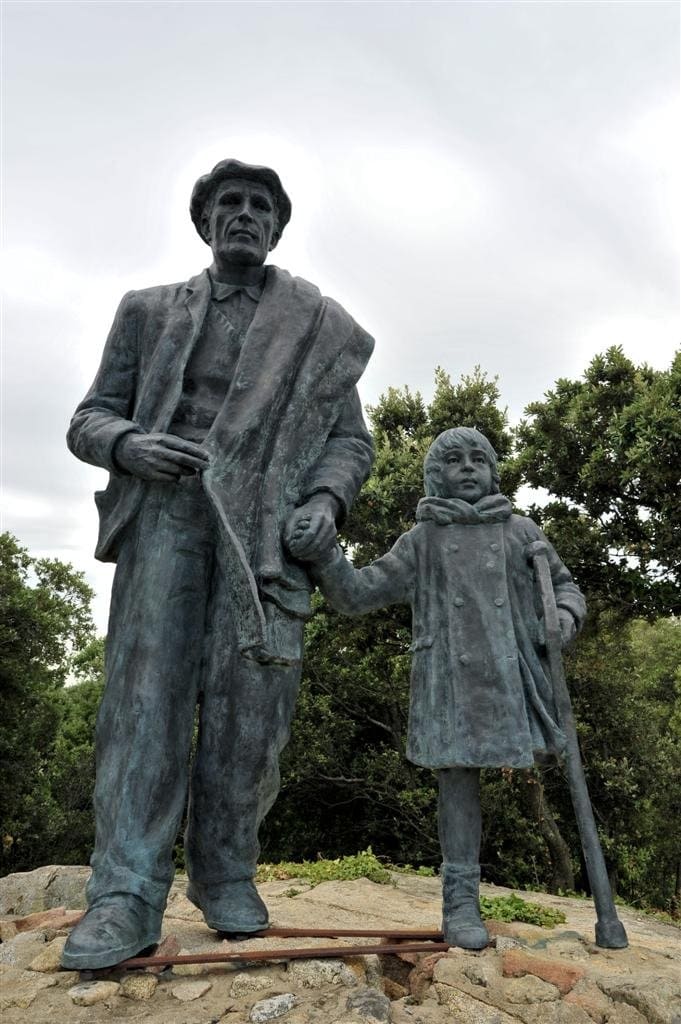
Back to the car park and left into the village, look out for the interesting mining sculpture on the right. The villagers of La Vajol mined talcum powder for many years. Today the mines are closed but during the Spanish Civil War, they were used to hide and store the treasures of the fallen Spanish Republic, priceless artwork from the Prado museum and around 500 million dollars in gold lingots.
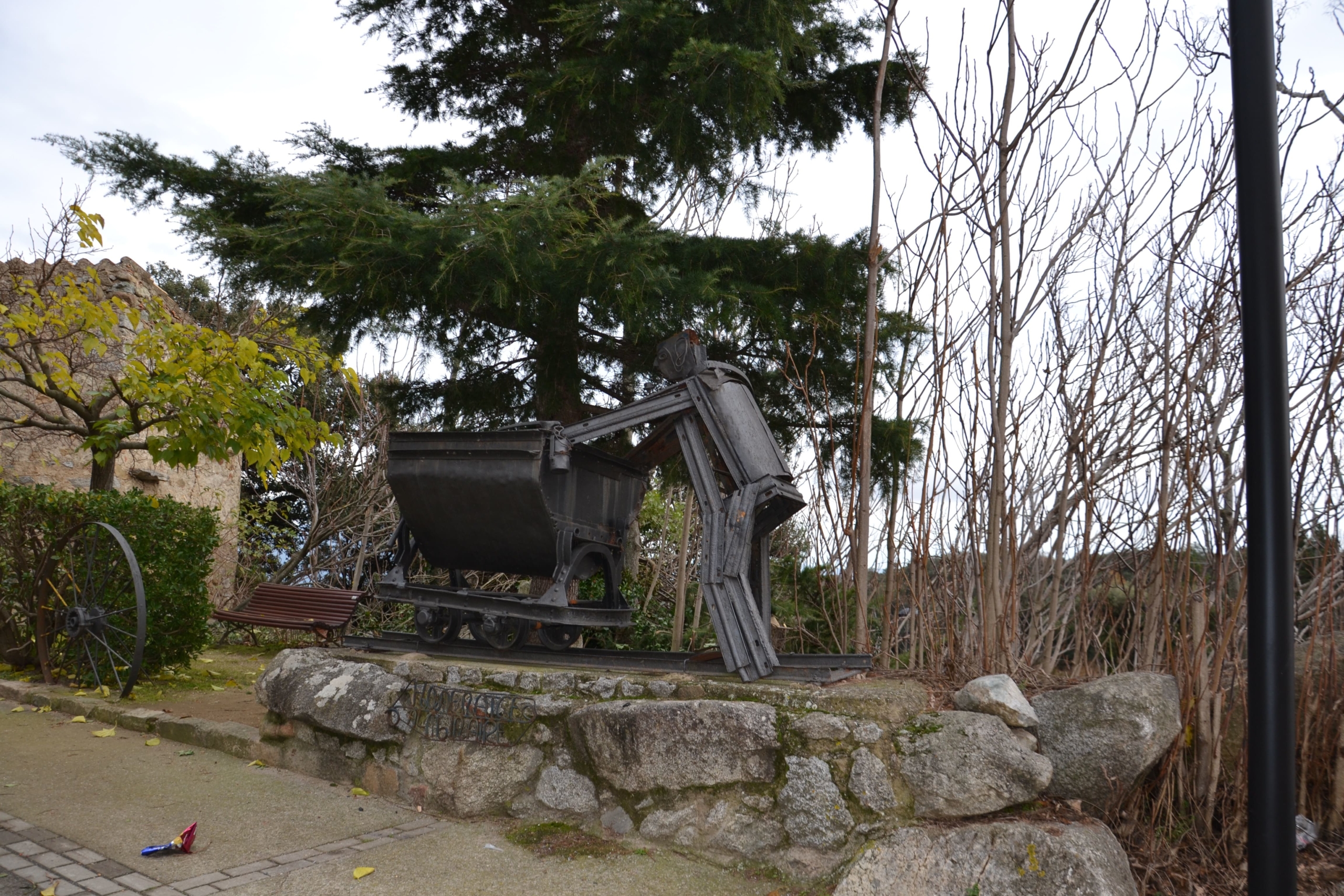
Opposite the mining sculpture, climb the ancient steps towards the plaça. We ate a very good lunch at the Casa Comaulis on the right. They also provide basic accommodation.
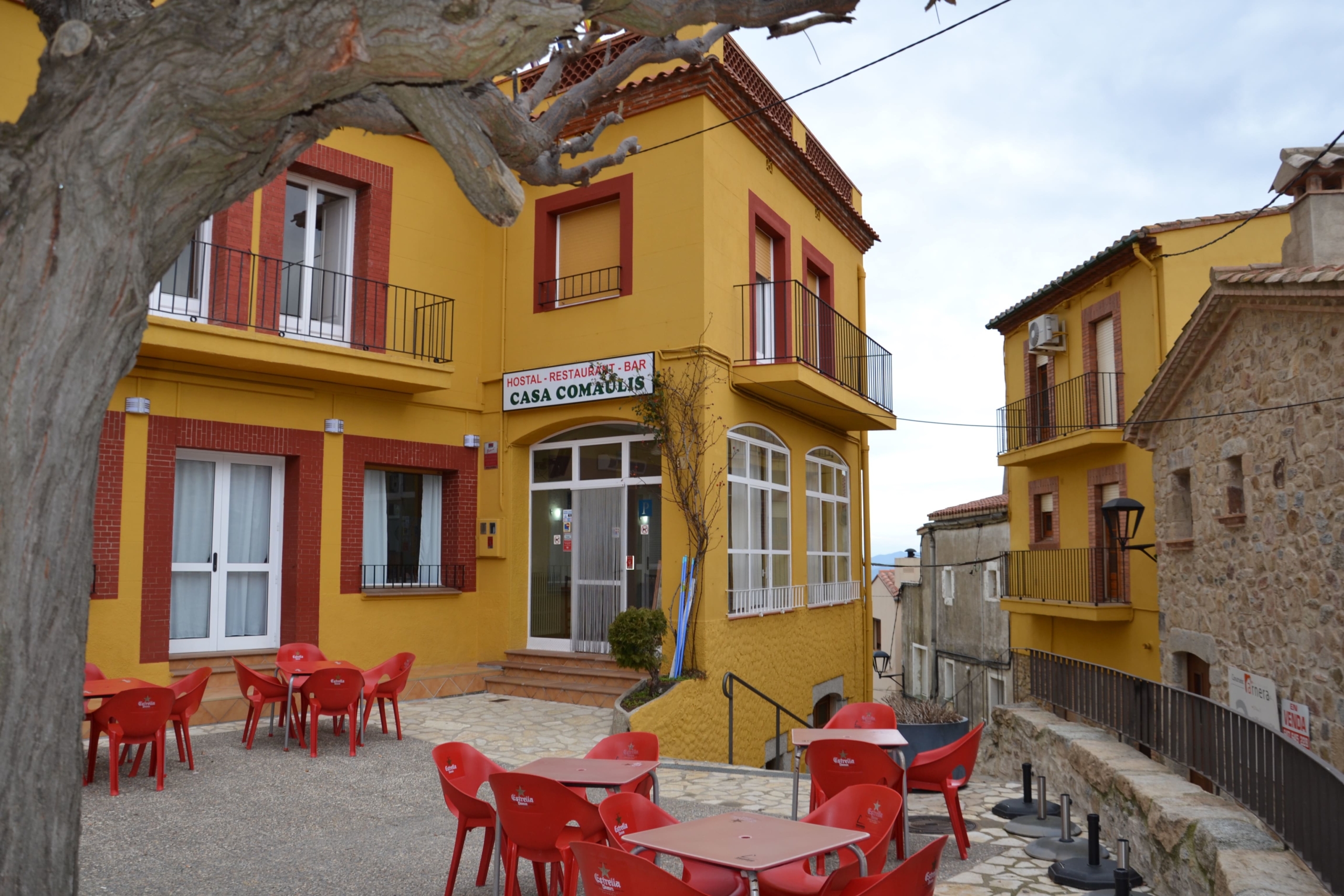
Wander along to the Romanesque church of Sant Martí de La Vajol with its steep exterior steps, a fascinating feature, and turning right after the church to arrive back onto the main through road and down the hill to the car.

From here you can continue to explore nearby Spanish villages such as pretty Maçanet de Cabrenys, make the long looping journey back into France via Coustouges, drive back on the main road via La Jonquera and Le Perthus, or retrace your steps back to Maureillas.
As featured in P-O Life n° 66 (winter 2019/20)
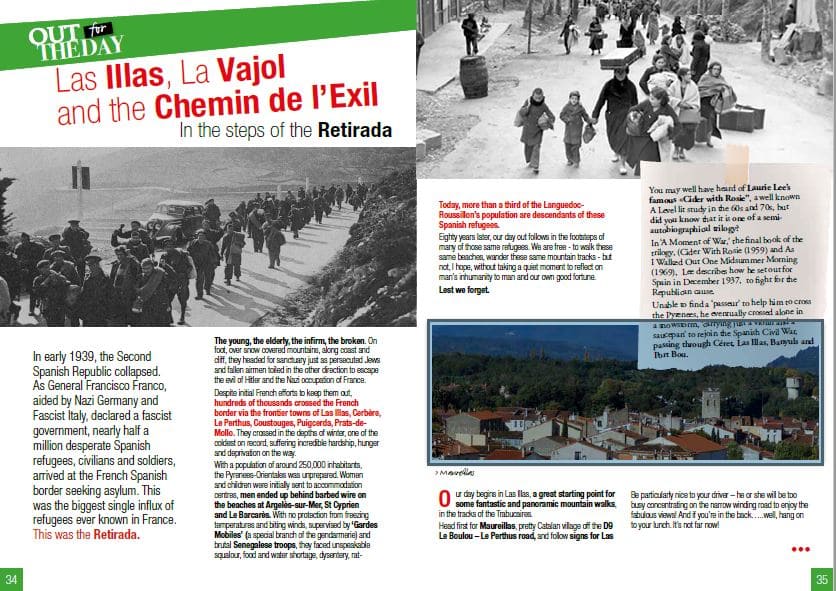

Thank you so much. Having read Rosemary Baileys book Life in a Postcard ( set right near Mosset – lovely Mosset) as well as her powerful Love and War in the Pyrenees, we, as annual visitors to P_O, will return this year with new eyes. Is the Argeles memorial easy to find? (Last year we followed the Walter Benjamin walk at Banyuls which you provided thank you.)
This year we plan to visit the Portbou memorial to him. As well as being conscious when we visit the Salses fort, of the camp there as well.
Lastly, I think you featured the Retirada in a previous issue? Was there a big display or some such a few years ago?
All fascinating isnt it? And makes us realise how lucky we are today. Yes, there are yearly displays, but if you visit the little retirada museum in Argeles village (easy to find right in centre) there is loads more info to be had. Enjoy.
IN 2020 eleven Stolpersteines (stepping stones) – small brass plaques in the pavement – were installed in Figueres, each bearing the last known local address of Jews who escaped to France in the Retirada and were deported and murdered, mostly in Mauthausen and Buchenwald.
Finding them and reading their names feels a very real way of remembering this shameful time in our history.
For those who want to read more about the Spanish Civil War and the fall of the 2nd Republic, Spain in Our Hearts, by Adam Roschchild (2016) is a well-written and very readable account of the volunteers who gave their lives to fight fascism.
So pleased that you continue to highlight the tragic history of the Spanish Civil War and the Retirada.
We have followed several routes to visit significant sites and memorials, it’s so important that we learn from history.
Rosemary Baileys book Love and War in the Pyrenees is worth reading too.
Thank you for this fascinating article that will lead me on to further study of the Retirada and, in particular, the area on Argelès beach where we have an apartment. Good to see, almost daily, school children being taken to the memorial to be told of this important history
Thanks so much for this article. It has inspired me to follow the route and find these places . It was such a terrible time in France’s history, and only has it been recognised in recent years. I had no idea one third of the population in the PO descend from these Spanish refugees.
A sobering thought.
Juliet Grimm
A great article – it brought back many memories of our visits to these places.
Pauline and I could have done with your article when we visited La Vajol, as it took us quite a bit of searching to locate the ‘father and daughter’ statue.
By the way , a reproduction of the original photo of these refugees is featured on the front cover of Paul Preston’s 2016 book ‘The Last Days of the Spanish Republic’.
Thanks